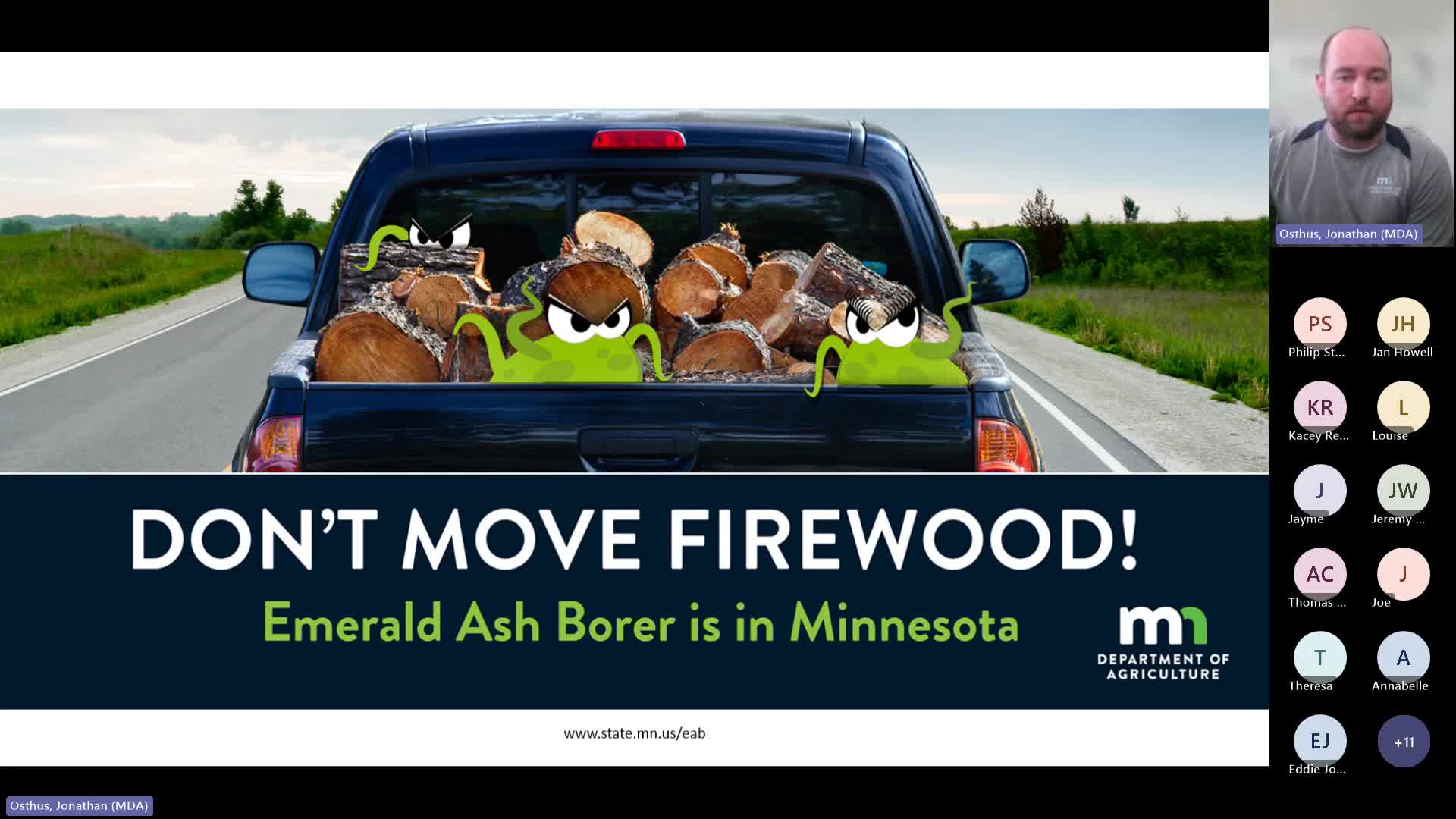Minnesota Officials Discuss Strategies for Managing Emerald Ash Borer Infestation
March 08, 2024 | Agriculture, Department of , Agencies, Boards, & Commissions, Executive, Minnesota

This article was created by AI summarizing key points discussed. AI makes mistakes, so for full details and context, please refer to the video of the full meeting. Please report any errors so we can fix them. Report an error »

In a recent informational meeting held by the Minnesota Department of Agriculture, community members gathered to discuss the looming threat of the Emerald Ash Borer (EAB) in Pine and Renville Counties. As the invasive pest continues to spread, local officials emphasized the importance of proactive management strategies to protect ash trees and maintain community landscapes.
The meeting highlighted best management practices for dealing with EAB, particularly the timing of tree removals and insecticide treatments. Experts advised against pruning or removing ash trees during the summer months when adult beetles are most active. Instead, they recommended waiting until fall or winter to minimize the risk of spreading the infestation. This approach allows for the safe disposal of infested wood, reducing the likelihood of EAB reinfestation in nearby trees.
Participants learned about two primary management options: tree removals and insecticide treatments. Communities with a significant number of ash trees are encouraged to begin removing those in poor condition before EAB arrives. Once the pest is detected, targeted removals of infested trees become crucial to prevent further damage. Insecticide treatments can also be effective, especially for healthy trees with less than 30% canopy decline. These treatments can prolong the life of valuable trees, providing shade and aesthetic benefits.
The discussion also touched on the importance of early detection and reporting of EAB infestations. Residents were urged to familiarize themselves with the signs of the pest and report any suspected cases to the Department of Agriculture. This proactive approach is vital for managing the spread of EAB, which is often facilitated by human activities, such as the movement of infested firewood.
To support communities in their management efforts, the Minnesota Department of Natural Resources (DNR) will soon offer grant opportunities for developing EAB management plans and funding tree removals and replacements. These grants are primarily available to public entities, emphasizing the collaborative effort needed to combat this invasive species.
As the meeting concluded, attendees were reminded of the importance of community involvement in monitoring and managing EAB. With the right strategies and timely actions, residents can help protect their trees and preserve the natural beauty of their neighborhoods.
The meeting highlighted best management practices for dealing with EAB, particularly the timing of tree removals and insecticide treatments. Experts advised against pruning or removing ash trees during the summer months when adult beetles are most active. Instead, they recommended waiting until fall or winter to minimize the risk of spreading the infestation. This approach allows for the safe disposal of infested wood, reducing the likelihood of EAB reinfestation in nearby trees.
Participants learned about two primary management options: tree removals and insecticide treatments. Communities with a significant number of ash trees are encouraged to begin removing those in poor condition before EAB arrives. Once the pest is detected, targeted removals of infested trees become crucial to prevent further damage. Insecticide treatments can also be effective, especially for healthy trees with less than 30% canopy decline. These treatments can prolong the life of valuable trees, providing shade and aesthetic benefits.
The discussion also touched on the importance of early detection and reporting of EAB infestations. Residents were urged to familiarize themselves with the signs of the pest and report any suspected cases to the Department of Agriculture. This proactive approach is vital for managing the spread of EAB, which is often facilitated by human activities, such as the movement of infested firewood.
To support communities in their management efforts, the Minnesota Department of Natural Resources (DNR) will soon offer grant opportunities for developing EAB management plans and funding tree removals and replacements. These grants are primarily available to public entities, emphasizing the collaborative effort needed to combat this invasive species.
As the meeting concluded, attendees were reminded of the importance of community involvement in monitoring and managing EAB. With the right strategies and timely actions, residents can help protect their trees and preserve the natural beauty of their neighborhoods.
View full meeting
This article is based on a recent meeting—watch the full video and explore the complete transcript for deeper insights into the discussion.
View full meeting
